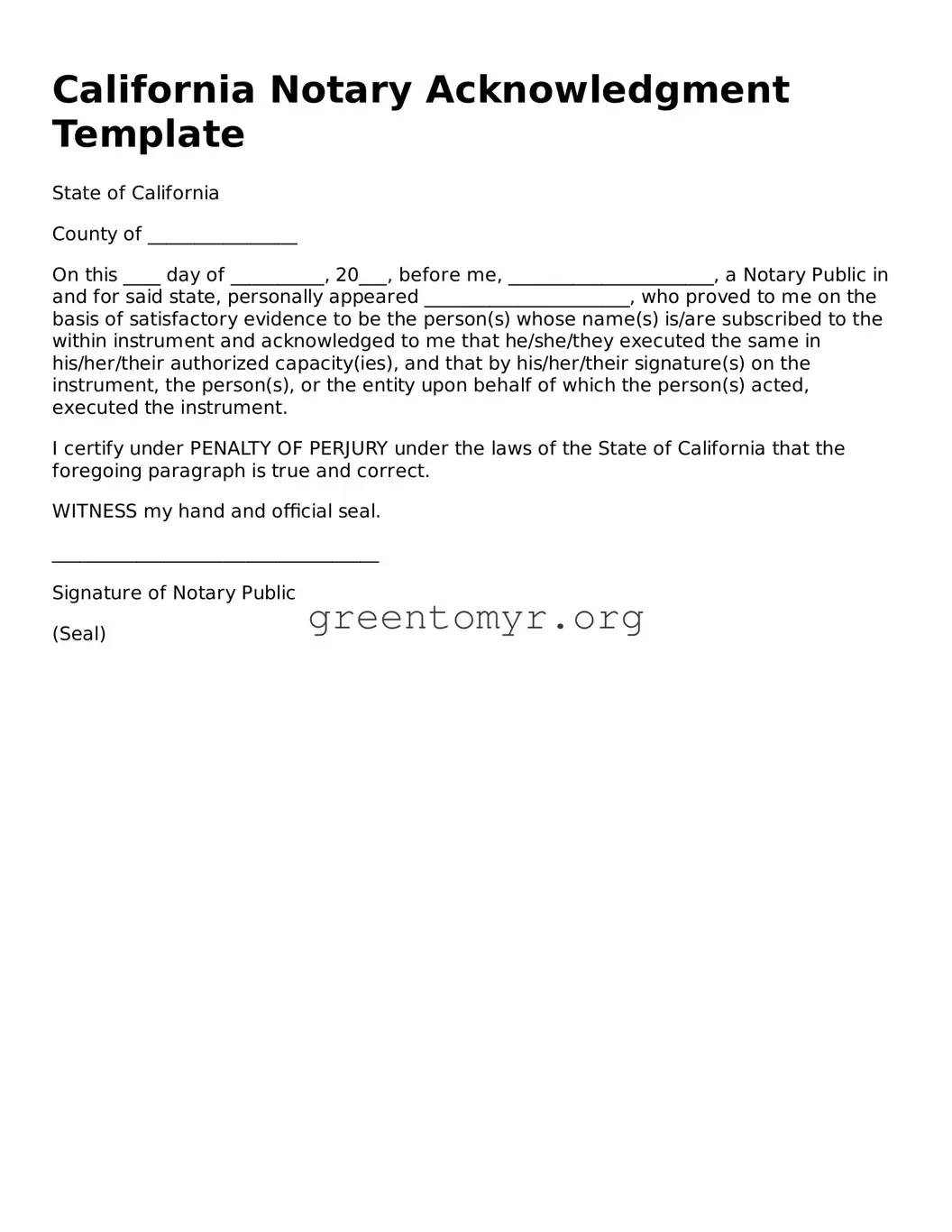The California Notary Acknowledgement form is a legal document used to confirm that a specific person has signed a document in the presence of a notary public. This form verifies the identity of the signer and ensures that they willingly signed the document without any coercion. It's commonly required for real estate transactions, contracts, and other legal processes.
Who can act as a notary public in California?
In California, a notary public must be at least 18 years old, a resident of the state, and possess a valid notary commission issued by the Secretary of State. They must pass a background check, take an examination, and complete necessary training. Notaries are authorized to witness signatures, administer oaths, and perform other duties related to document authentication.
The California Notary Acknowledgement form typically requires the following information:
-
The name of the person signing the document.
-
The date of the notarization.
-
A description of the document being signed.
-
The notary's signature and seal.
-
The notary's name printed exactly as it appears on their commission.
No, the Notary Acknowledgement form is not required for every document. It is specifically needed when the law mandates notarization for certain types of documents, or when a party requires it for their own protection. Always check the particular requirements of your document.
To fill out the form accurately, follow these steps:
-
Enter the name of the signer exactly as it appears on their identification.
-
Specify the type of document being acknowledged.
-
Ensure that the signer physically appears before the notary during the signing.
-
The notary public should sign the form and affix their seal in the designated area.
If a mistake is made while completing the Notary Acknowledgement form, it is important to correct it properly. Cross out the error with a single line, write the correct information, and initial the correction. Do not use white-out or attempt to erase any part of the form. This maintains the integrity of the document.
Can I use a notarized document in another state?
Yes, notarized documents from California are generally recognized in other states. However, legal recognition can vary depending on the specific requirements of each state. It’s advisable to check the rules of the state where the document will be used to ensure it meets all necessary criteria.
What happens if a notary public fails to follow proper procedures?
If a notary public does not follow the required procedures, it can lead to questions regarding the validity of the document. This may result in legal disputes or potential fraud claims. It is crucial for notaries to adhere to all state guidelines to ensure the legal validity of their actions.
How long is a notary public commission valid in California?
A notary public commission in California is valid for four years. Notaries must renew their commission before it expires to continue providing notarization services. Renewal typically requires completing a refresher course and passing an examination.
